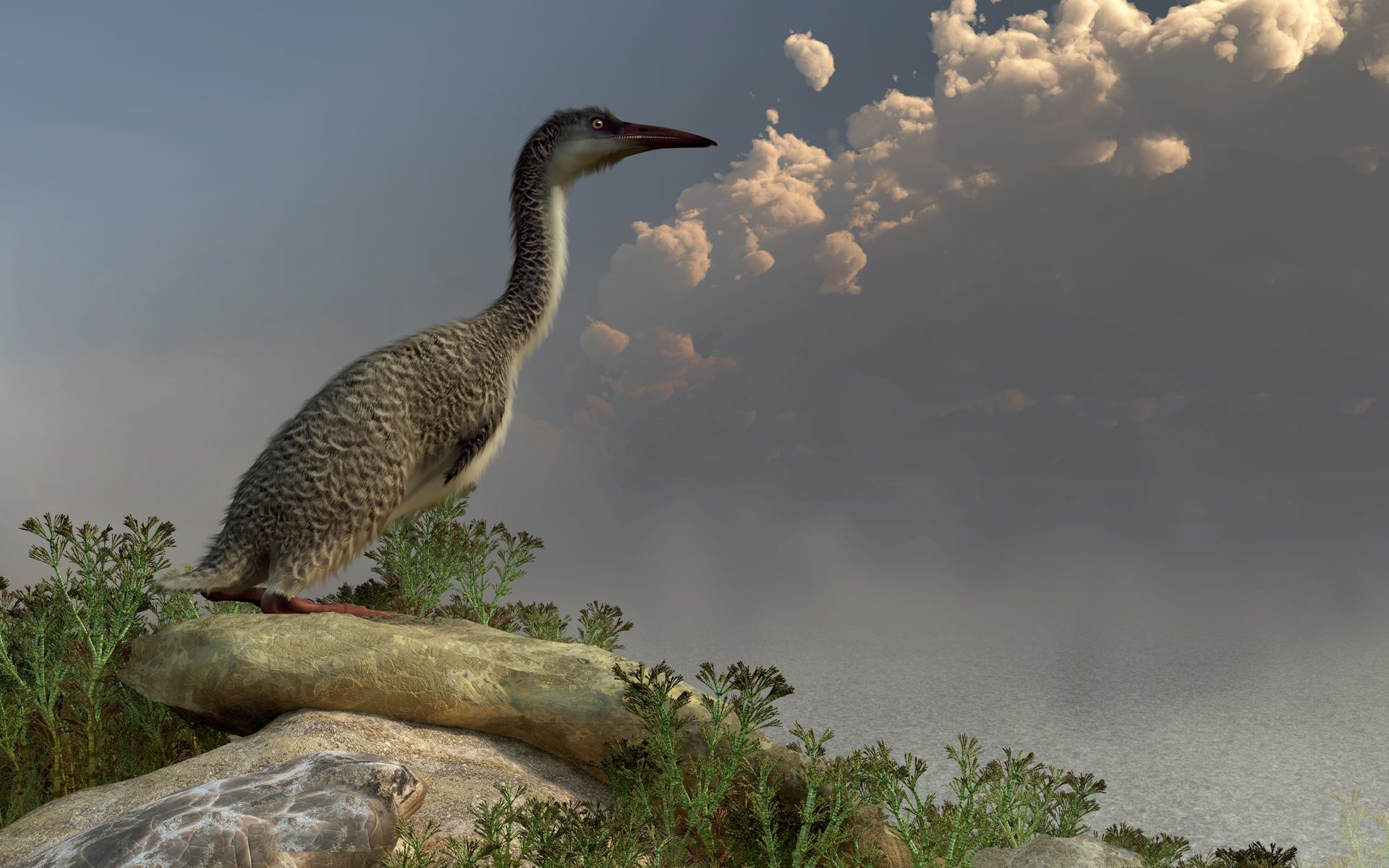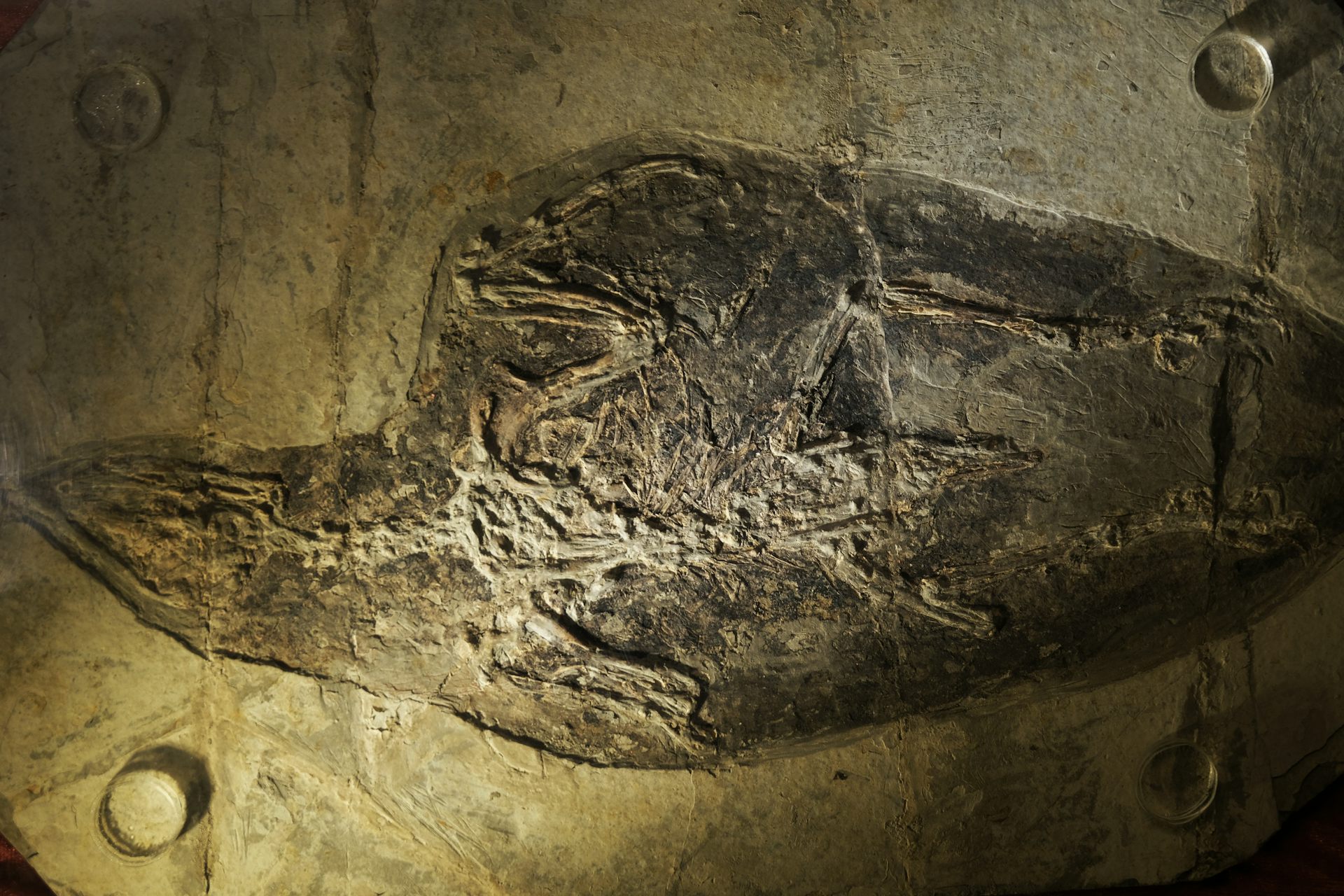A brief guide to birdwatching in the age of dinosaurs
What would it have been like to go bird-watching in that very long period of pre-'Creation Week' history just before a cataclysmic meteor strike cause the extinction of almost all the dinosaurs, 66 million years before creationists believe their god created a small, flat planet with a dome over it in the Middle-east?
At that time, Earth had a large population of dinosaurs, some of which were later to become modern birds which evolved to fill the vacated niches formerly occupied by the dinosaurs, while another survivor, a small rat-like early mammal, the descendant of mammal-like reptiles radiated into modern mammals.
For a period, these early birds, the avian dinosaurs which had evolved from the bipedal theropod dinosaurs, formed two major groups - the ornithuromorphs and the enantiornithine.
What information do you have on the evolution of the enantiornithines and ornithuromorphs dinosaurs? Enantiornithines and ornithuromorphs are two important groups of birds that evolved during the Mesozoic Era, specifically during the Cretaceous period. Here's an overview of their evolution:The evolution of both enantiornithines and ornithuromorphs represents important stages in the development of avian diversity and flight adaptation. While enantiornithines represent an early radiation of avian forms that ultimately went extinct, ornithuromorphs are thought to have given rise to the lineage that led to modern birds. Further discoveries and research continue to refine our understanding of the evolutionary relationships between these ancient birds and their modern descendants.
- Enantiornithines:
- Enantiornithines were a diverse group of birds that lived during the Cretaceous period. They are often referred to as "opposite birds" because their shoulder joints were structured differently from modern birds, giving them a somewhat opposite appearance.
- These birds were globally distributed and occupied various ecological niches, ranging from aquatic to terrestrial habitats.
- Enantiornithines had teeth and clawed wings, features not present in modern birds. They also lacked a specialized breastbone (sternum) like that of modern birds.
- Fossil evidence suggests that enantiornithines were quite successful and abundant during the Cretaceous, but they went extinct along with non-avian dinosaurs at the end of the Cretaceous period, about 66 million years ago.
- Ornithuromorphs:
- Ornithuromorphs are another group of birds that lived during the Cretaceous period. They are considered more closely related to modern birds than enantiornithines.
- Unlike enantiornithines, ornithuromorphs had a keeled sternum, similar to modern birds, which likely provided a more efficient attachment for flight muscles.
- Ornithuromorphs also had a toothless beak, indicating a more specialized diet compared to enantiornithines.
- Fossil evidence suggests that ornithuromorphs evolved diverse body forms and lifestyles, including some species that were capable of powered flight over long distances.
- Ornithuromorphs survived the mass extinction event at the end of the Cretaceous period and are believed to be the ancestors of modern birds.
What then would a cretaceous bird-watcher have seen? In the following article, reprinted from The Conversation, Abi Crane, a Postgraduate Researcher in Palaeontology, University of Southampton, explains what a time-travelling ornithologist might have seen. Her article is reprinted under a Creative Commons licence, reformatted for stylistic consistency:

A brief guide to birdwatching in the age of dinosaurs
Abi Crane, University of Southampton
Have you ever wondered what it would be like to travel back in time to the age of dinosaurs? If you stumble upon a time machine, remember to bring your binoculars. Birdwatching is a popular hobby today, with an around 3 million participants in the UK alone, and in our modern world there are a staggering 11,000 species of birds to spot.
Despite the popularity of their modern-day descendants, we often forget about ancient birds because of their more famous dinosaur cousins.
Birds are actually a type of dinosaur. They are closely related to smaller, agile meat-eating dinosaurs such as the Velociraptor. Ancient birds came in a variety of forms, from ones with teeth and claws to species barely distinguishable from farmyard chickens.
So, if you were to point your binoculars over the heads of Triceratops and Tyrannosaurus rex, what could you spot? Here is a quick introduction to six of the most interesting ancient bird species.
Archaeopteryx
Archaeopteryx is the iconic “dino-bird” from the Jurassic period. The discovery of Archaeopteryx fossils in Germany over 150 years ago provided scientists with the first clues about the link between dinosaurs and modern birds.
At first glance, the skeleton of Archaeopteryx is just like any other meat-eating dinosaur – sharp teeth, clawed hands and a long bony tail. Surrounding the skeleton of specimens such as the Berlin Archaeopteryx (discovered between 1874 and 1876) however, are imprints of feathers which form a pair of distinctly bird-like wings.

Archaeopteryx looked half way between a dinosaur and a modern bird.
Confuciusornis
This crow-sized bird had a beak like that of modern-day birds, but still had large, dinosaur-like claws on its hands. It is thought that they lived in flocks, large numbers of which were killed by ash or gas in volcanic eruptions and preserved as fossils. Known from over 1,000 fossil specimens from China, Confuciusornis is one of the most common fossil bird species.
Some of these birds had a pair of tail feathers longer than their body, while others lacked these long feathers and would have looked comparatively stumpy. Scientists think these long-tailed birds were the males of the species and those with short tails were females. Like modern peacocks and peahens, the males probably used their extravagant tail feathers to woo the females.
Falcatakely
Discovered in 2020, Falcatakely, from Madagascar, would have resembled a small, buck-toothed toucan. Its oversized, banana-shaped bill only had teeth at the very tip. Although we don’t know what this buck-toothed bird would have eaten, its close relatives ate a variety of food, including fruit, fish and even larger prey.
Scientists think that birds such as Falcatakely could fly the same day they hatched from their egg, unlike birds today which spend their first weeks or months helpless in the nest.
Hesperornis
One of the weirdest birds from the age of dinosaurs, Hesperornis would have looked something like a six-foot-tall penguin with a beak full of sharp teeth. Its tiny arms would have made T rex look like a weightlifter, so it definitely couldn’t have used them to fly.

Hesperornis was an aquatic bird that lived at the time of the dinosaurs.
Vegavis and Asteriornis
Towards the end of the dinosaurs’ reign, the earliest groups of modern birds began to appear. The first of these birds to be discovered was Vegavis from Antarctica, which in the time of dinosaurs would have been covered in trees rather than ice.
It was probably an ancestor of ducks and geese and one exceptional fossil of Vegavis even has a rare preserved vocal organ. Analysis of this fossil suggested that Vegavis couldn’t make a songbird melody but could have made simple noises such as goose-like honks.
Sixty-six million years ago, not long before the asteroid impact, which caused the extinction of the non-bird dinosaurs, lived Asteriornis. This quail-sized bird from Belgium was an ancestor of modern ducks and chickens. Although it would have looked unremarkable compared to the giant swimming lizards and huge, toothed seagulls it lived alongside, this may have been to its advantage.
Scientists think that the small size of birds such as Asteriornis helped them to survive the mass extinction. Because smaller animals need less food and take less time to reproduce, these humble birds were able to survive and evolve into the birds you can see through your binoculars today.
Abi Crane, Postgraduate Researcher in Palaeontology, University of Southampton
This article is republished from The Conversation under a Creative Commons license. Read the original article.
What Makes You So Special? From The Big Bang To You
How did you come to be here, now? This books takes you from the Big Bang to the evolution of modern humans and the history of human cultures, showing that science is an adventure of discovery and a source of limitless wonder, giving us richer and more rewarding appreciation of the phenomenal privilege of merely being alive and able to begin to understand it all.
Available in Hardcover, Paperback or ebook for Kindle
Ten Reasons To Lose Faith: And Why You Are Better Off Without It
This book explains why faith is a fallacy and serves no useful purpose other than providing an excuse for pretending to know things that are unknown. It also explains how losing faith liberates former sufferers from fear, delusion and the control of others, freeing them to see the world in a different light, to recognise the injustices that religions cause and to accept people for who they are, not which group they happened to be born in. A society based on atheist, Humanist principles would be a less divided, more inclusive, more peaceful society and one more appreciative of the one opportunity that life gives us to enjoy and wonder at the world we live in.
Available in Hardcover, Paperback or ebook for Kindle








No comments :
Post a Comment
Obscene, threatening or obnoxious messages, preaching, abuse and spam will be removed, as will anything by known Internet trolls and stalkers, by known sock-puppet accounts and anything not connected with the post,
A claim made without evidence can be dismissed without evidence. Remember: your opinion is not an established fact unless corroborated.